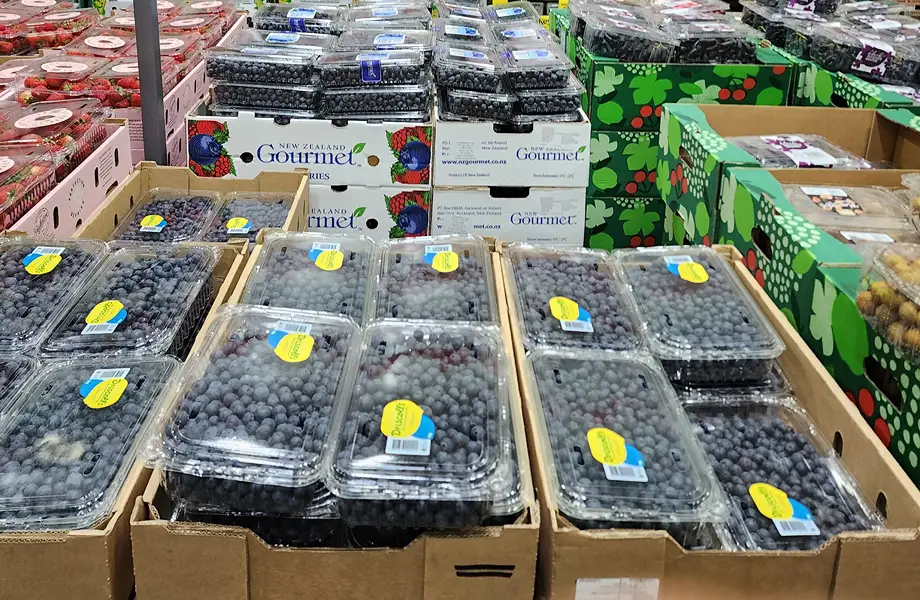Raspberries in Peru have failed to follow the path of their berry cousins. While blueberry and the strawberry have managed to increase production and exports, the raspberry is still an experimental crop in Peru, despite being in the country for nearly 10 years.
In part this is due to the varieties chosen. According to Dr. Marina Gambardella, a researcher and lecturer at the Faculty of Agronomy at the Catholic University of Chile and a consultant on raspberry production in Peru, the country started with the Heritage variety. It is the most traditional of raspberries, with high productivity, hardiness and sweetness. But its low caliber and the handling problems it generated prompted growers to look for new varieties.
BENEFITS OF NEW VARIETIES
The consultant points out that there has been a focus on new varieties that in temperate climate conditions, as is the case in the coastal zone of Peru, have the ability to produce more fruit throughout the year.

Some companies have introduced "Santas" varieties, such as Santa Clara and Santa Catalina, both of Chilean origin, Gambardella says. They have also added Adelita, from Planasa, Spain, and Kwanza and Kweli, both from the Dutch Advanced Berry Breeding (ABB) breeding program. Raspberry expert Marina Gambardella points out that the Heritage variety did not have proper agronomic management, which prevented the fruit from reaching its potential.
This results in a clear productivity advantage: yields of these varieties under these conditions would reach 23 t/ton per hectare. "These values are in line with the yields obtained by these varieties in other areas, under similar agroclimatic conditions (e.g., Mexico 18.3 t/ha average, Spain and Portugal 24.1 t/ha average, although in the latter two countries cultivation is predominantly tunnel cultivation."
However, he points out, there are still doubts about the quality of the fruits obtained and especially their post-harvest characteristics.
PHYTOSANITARY CHALLENGES
For now, raspberry growers in Peru are trying to solve phytosanitary problems, including diseases caused by soil fungi such as Phytophthora, Pythium, Fusarium, and Macrophomina. The researcher stresses that it is very important that orchards are made with plants from specialized nurseries, which should provide healthy and good quality plants.

It is also important that good soil management is carried out, without exposing plants to waterlogged conditions, and that good soil rotation is carried out. "If planting is done in areas with high relative humidity during harvest periods, gray rot due to the fungus Botrytis is also a major problem that could cause large yield losses," warns Dr. Gambardella.
There are other pest and disease problems that can pose a serious threat. One of these is Drosophila, which is causing serious damage throughout the developing world. The specialist explains that in Peru, probably in the early stages of crop development, pest and disease pressure will be low. However, as the planted area grows, it will face a higher incidence of the major pests that affect raspberries.
For berry growing consultant Jose Cordero, agronomic management of raspberries is not that complicated, but he says it is crucial for growers to learn the process both in terms of phytosanitary and production and marketing. At the same time, he stresses that it will be very important to introduce new varieties that are resistant to root fungi or more resistant to pests and diseases. As well as continuing to check with permitted products.
In this regard, it is important to opt for an integrated management system that includes prevention, monitoring, proper crop nutrition, cultural practices (crop rotation, trap crops, host pest elimination, etc.), biological and chemical control.
FERTILIZATION REQUIREMENTS
Nutrient requirements for raspberry crops vary by variety and crop stage, depending on the results of nutrient supply from the soil; one tool for assessing crop requirements is the use of nutrient uptake and extraction curves. "Achieving higher yields for raspberries is possible by properly considering and managing the multiple factors involved in production, starting with good fertility diagnostics," Cordero points out.
According to some literature, traditional and new varieties with higher yields should first be tested at different doses of NPK/ha with nursery advice. "80-100 units of nitrogen, 80-100 units of phosphoric acid, 100-150 units of potassium oxide, 30-40 units of magnesium are recommended. 30-40 units of magnesium and 20-30 units of calcium," the consultant says.
Source: Redagro









